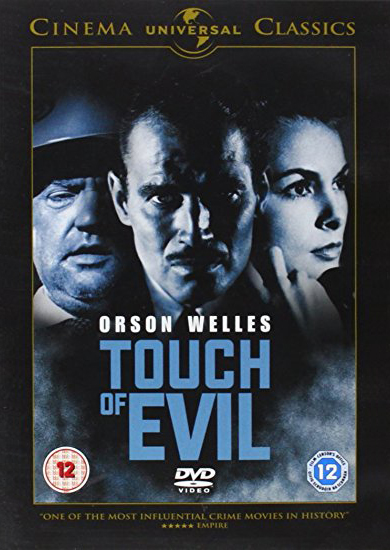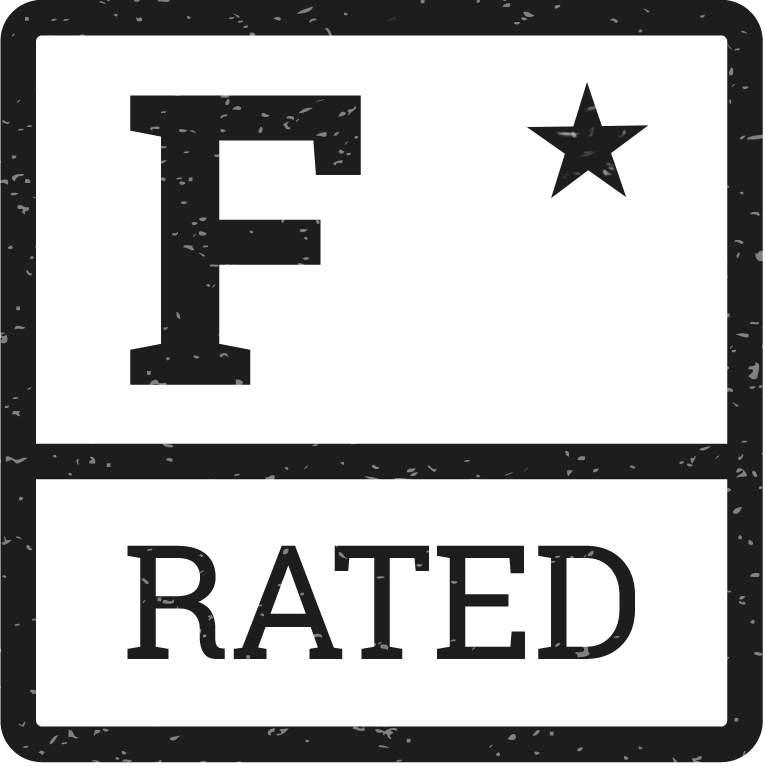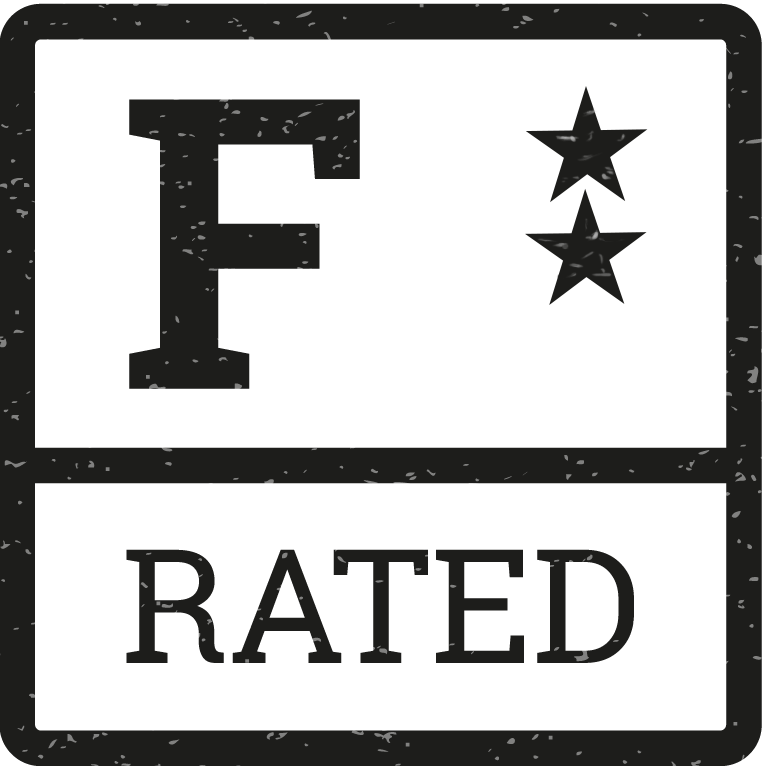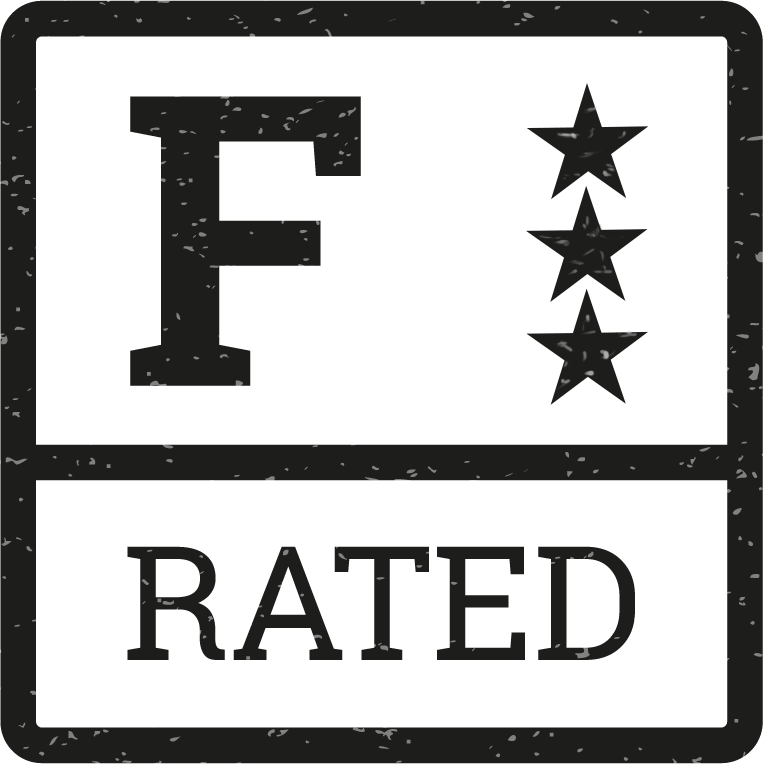A Touch of Evil
Film noir starring Charlton Heston, Janet Leigh, Marlene Dietrich and Orson Welles directing and starring in this late masterpiece. A stark, perverse story of murder, kidnapping, and police corruption in a Mexican border town - it is film noir at its best.
Film Notes
THANKS to Orson Welles, nobody, and we mean nobody, will nap during "Touch of Evil," which opened yesterday at R. K. O. theatres. Just try. The credits come on, for instance, to a sleepy, steady rumba rhythm as a convertible quietly plies the main street of a Mexican border town. The car is rigged with dynamite. And so, as a yarns-pinning director, is the extremely corpulent Mr. Welles, who co-stars with Charlton Heston and Janet Leigh in this Universal release. Mr. Welles also adapted the novel by Whit Masterson called "Badge of Evil" (which would have been more like it), helping himself to the juicy role of a fanatical Texas cop who frames a Mexican youth for murder, and clashes with an indignant Mexican sleuth, Mr. Heston. In addition to battling Mr. Welles, a psychopath who runs the town, Mr. Heston has to fend off a vengeful narcotics gang menacing his young bride, Miss Leigh. Any other competent director might have culled a pretty good, well-acted melodrama from such material, with the suspense dwindling as justice begins to triumph (as happens here). Mr. Welles' is an obvious but brilliant bag of tricks. Using a superlative camera (manned by Russell Metty) like a black-snake whip, he lashes the action right into the spectator's eye. The careful groupings of the cast, the overlapping of the speeches and other stylized trade-marks of the director's Mercury Players unit are here. But the tempo, at least in the first half, is plain mercurial, as befits a thriller. Where Mr. Welles soundly succeeds is in generating enough sinister electricity for three such yarns and in generally staging it like a wild, murky nightmare. Miss Leigh has the most blood-curdling time of all in two sequences, one involving a strangulation in a hotel room. The other—her siege by some young punks in an isolated motel—should make any viewer leery of border accommodations for a long time to come. However, while good versus evil remains the text, the lasting impression of this film is effect rather than substance, hence its real worth. The cunningly designed climax, for instance, barely alludes to the framed youth at the outset (in a fine, ironic twist, by the way). The entire unsavory supporting cast is excellent, including such people as Joseph Calleia, Akim Tamiroff and Ray Collins. Marlene Dietrich, as an incidental "guest star," wisely advises Mr. Welles to "lay off the candy bars." Two questions—the first to Mr. Welles, who obviously savors his dominant, colorful role. Why would a villainous cop, having hoodwinked the taxpayers for some thirty years, suddenly buckle when a tourist calls his bluff? And why, Mr. Heston, pick the toughest little town in North America for a honeymoon with a nice morsel like Miss Leigh?
HOWARD THOMPSON, The New York Times, May 22, 1958
All liberals should memorise this film’s superb line, spoken by, all of people, Charlton Heston: “A policeman’s job is only easy in a police state!” Orson Welles’s brilliant 1958 noir melodrama Touch of Evil is now on rerelease. Adapted by Welles from Whit Masterson’s pulp thriller Badge of Evil, it had streaks of teen degradation and reefer madness, and the most intense interracial relationship since The Searchers. Like much of Welles’s work, it was taken out of his hands by studio chiefs and re-edited without his approval, but has been restored as far as possible according to wishes he expressed in a long, anguished memo – especially in the removal of the credits that were superimposed on the famous opening tracking shot. Welles gave one of his most Shakespearean performances as the ageing, corrupt police chief Captain Quinlan in a small US town right on the Mexico border. Charlton Heston plays Vargas, an idealistic Mexican cop who has just married Susan (Janet Leigh), a beautiful American blonde, to the titillated, censorious fascination of everyone around. Nettled by the uppity Vargas’s intermarrying and meddling, the crooked Quinlan decides to use the local drug gang to attack Susan at a remote hotel, and frame her as a supposed drug addict. To associate with Quinlan is to be touched, smeared, molested by pure evil. But poor Quinlan long ago resigned himself to his own petty corruption.
Peter Bradshaw, The Guardian, July 9 2015
Come on, read my future for me.You haven't got any. What do you mean? Your future is all used up. So speaks a fortune-telling madam, played by Marlene Dietrich, to the drunken sheriff of a border town, played by Orson Welles, in "Touch of Evil." Her words have a sad resonance, because Welles was never again to direct in Hollywood after making this dark, atmospheric story of crime and corruption. It was named best film at the 1958 Brussels World Fair (Godard and Truffaut were on the jury), but in America it opened on the bottom half of a double bill, failed, and put an end to Welles' prospects of working within the studio system. Yet the film has always been a favorite of those who enjoy visual and dramatic flamboyance. “I'd seen the film four or five times before I noticed the story,” the director Peter Bogdanovich once told his friend Orson. “That speaks well for the story,” Welles rumbled sarcastically, but Bogdanovich replied, “No, no--I mean I was looking at the direction.” That might be the best approach for anyone seeing the film for the first time: to set aside the labyrinthine plot, and simply admire what is on the screen. The movie begins with one of the most famous shots ever made, following a car with a bomb in its trunk for three minutes and 20 seconds. And it has other virtuoso camera movements, including an unbroken interrogation in a cramped room, and one that begins in the street and follows the characters through a lobby and into an elevator. The British critic Damian Cannon writes of its “spatial choreography,” in which “every position and movement latches together into a cogent whole.” Welles and his cinematographer, Russell Metty, were not simply showing off. The destinies of all of the main characters are tangled from beginning to end, and the photography makes that point by trapping them in the same shots, or tying them together through cuts that match and resonate. The story moves not in a straight line, but as a series of loops and coils. Some of those loops were removed when Universal Studios took the film from Welles and re-edited it, adding closeups and chopping scenes, so that it existed for years in a confusing 95-minute version, and then belatedly in a 108-minute version that still reflected the studio's meddling. Now at last Welles' original intentions (explained in a 58-page memo to the studio) are reflected in a restored version that is three minutes longer and contains 50 changes, some large, some small. This version was produced by Rick Schmidlin and edited by Oscar winner Walter Murch, inspired by a crucial 1992 article in Film Quarterly by Chicago critic Jonathan Rosenbaum. The story takes place in Los Robles, a seedy Mexican-American border town (“border towns bring out the worst in a country”). It's a place of bars, strip clubs and brothels, where music spills onto the street from every club. In the opening shot, we see a bomb placed in the trunk of a car, and then the camera cranes up and follows the car down a strip of seamy storefronts, before gliding down to eye level to pick up a strolling couple. They are newlyweds, Mike and Susan Vargas (Charlton Heston and Janet Leigh); he's a Mexican drug enforcement official. At a border checkpoint, they're eventually joined by the doomed car, which has been delayed by traffic and a herd of goats. Mike and Susan are completing the check when there's an offscreen explosion--and then finally a cut, to the burning car lifting in the air. (I've always felt this cut is premature; better to hear the offscreen explosion, stay on Mike and Susan as they run to the burning car, and then cut.) Everyone awaits the arrival of Sheriff Hank Quinlan (Welles), a massive, sweaty, rumbling figure who looms over the camera. (Welles was not that big when he made the picture, and used padding and camera angles to exaggerate his bulk.) Quinlan takes charge, “intuiting” that the explosion was caused by dynamite. Vargas, a bystander, finds himself drawn into the investigation, to Quinlan's intense displeasure; the movie becomes a competition between the two men, leading to the sheriff's efforts to frame Vargas and his bride on drug and murder charges. Viewers familiar with the earlier version will not feel they are seeing a different film, but may be able to follow the plot more easily. The most important changes take place in these opening minutes, when the stories of the Heston and Leigh characters are now intercut (the studio positioned all of the wife's hazards with a local gang after her husband's dealings with Quinlan). Another significant change: The opening shot is now seen without superimposed credits (they've been moved to the end), and with music from car radios and clubs, instead of Henry Mancini's title theme (Welles thought source music and sound effects would better establish the atmosphere). Welles fills his story with a meaty selection of supporting characters, including Quinlan's faithful sidekick Menzies (Joseph Calleia), the slimy local crime boss Grandi (Akim Tamiroff), the local madam (Dietrich), a butch gang leader (Mercedes McCambridge), an ineffectual district attorney (Ray Collins, from “Citizen Kane”) and particularly a sexually obsessed motel night clerk (Dennis Weaver), whose peculiar skittishness may have given ideas to Anthony Perkins for “Psycho” two years later. These figures move back and forth across the border, through a series of grim and grungy locations. Although the plot line is possible to follow, the real point is the way Quinlan veers from the investigation to follow his own agenda. He's prejudiced against Mexicans, resents Vargas for invading his turf, and supports “hunches” by planting evidence. When Vargas calls him on the fraud, he vows to destroy him. As Vargas and Quinlan jockey for position in the investigation, Susan is endangered in scenes that work as a terrified counterpoint. Vargas unwisely checks his wife into a motel run by the local gang, and young thugs terrorize her. Her perils sometimes border on the ludicrous, especially in a scene where they shine a flashlight into her room. Later, a gang rape is implied, but the movie curiously ignores or forgets its repercussions for Susan. Menzies, the deputy, has been faithful to Quinlan because the sheriff once stopped a bullet intended for him. The movie establishes his gradual enlightenment, as Vargas proves that Quinlan planted evidence and framed innocent people. Why does Quinlan stoop so low? Thirty years earlier his own wife was murdered, and the killer went free; now he boasts, “That was the last killer that ever got out of my hands.” The final sequence involves the disillusioned Menzies wearing a concealed microphone while prompting Quinlan into a confession. Vargas shadows them with a radio and tape recorder. This scene is visually effective, as the sheriff and deputy follow a garbage-strewn canal, but it's not logical. Vargas wades through water and climbs mountains of debris to stay within radio range of the talking men, when he could simply have hidden the tape recorder on Menzies. And he inexplicably leaves the radio turned up, so Quinlan can hear the echo of his own voice. That works as showmanship even while it fails as strategy. The surface themes of “Touch of Evil” are easy to spot, and the clash between the national cultures gets an ironic flip: Vargas reflects gringo stereotypes while Quinlan embodies cliches about Mexican lawmen. But there may be another theme lurking beneath the surface. Much of Welles' work was autobiographical, and the characters he chose to play (Kane, Macbeth, Othello) were giants destroyed by hubris. Now consider Quinlan, who nurses old hurts and tries to orchestrate this scenario like a director, assigning dialogue and roles. There is a sense in which Quinlan wants final cut in the plot of this movie, and doesn't get it. He's running down after years of indulgence and self-abuse, and his ego leads him into trouble. Is there a resonance between the Welles character here and the man he became? The story of Welles' later career is of projects left uncompleted and films altered after he had left them. To some degree, his characters reflected his feelings about himself and his prospects, and “Touch of Evil” may be as much about Orson Welles as Hank Quinlan. Welles brought great style to his movies, embracing excess in his life and work as the price (and reward) of his freedom.
Roger Ebert, Chicago Sun Times, September 13, 1998
What you thought about A Touch of Evil
Film Responses
| Excellent | Good | Average | Poor | Very Poor |
|---|---|---|---|---|
| 12 (22%) | 23 (42%) | 18 (33%) | 2 (4%) | 0 (0%) |
|
Total Number of Responses: 55 Film Score (0-5): 3.82 |
||||
Collated Response Comments
119 members and guests came along to see “A Touch of Evil “and 55 passed a written opinion. That is 46%: well below our average for the year so far of 58%. As with Aquarius, out lowest scoring film so far, I think many of you were a little non plussed at what you had seen and unable immediately to form an opinion. This response maybe summed up a lot of what you all felt… “I could appreciate that the film was a masterpiece in terms of innovation, camerawork, direction and acting (on the part of Orson Welles) and way ahead of its time but I didn’t enjoy it. Not sure why (gloomy, depressing?) I’ve had this film on my ‘must see’ list for a very long time so am grateful for the opportunity to tick it off”; followed with “Brilliant opening sequence and overall an enjoyable film. Sometimes struggled to understand the dialogue - not sure if it was sound or in character mumbling and accent. Orson Welles was excellent and produced a really unlikeable and seedy character for the part, who you somehow ended up feeling slightly sorry for. Interested, having seen this, how the version Universal originally put out differed. Can see there was scope to clarify the storyline in places but still overall a good watch”. Several commented that they “felt the story was weak and the sound poor and that the “passage of time has not been kind to this film…” but that it “picked up towards the end…” Others were of a much more positive opinion telling us that they thought it “a masterpiece of a film”. “A gripping film, with great acting and camera control”…. “A dark web of bloody intrigue – with an overpowering performance form Orson Welles. Ominous power throughout”. “Dialogue difficult at times. Great direction and acting”. “Great to see the film again after many years. A tremendous study in the process of corruption”. “Excellent photography – powerful performance by “Some kind of man!””. “Genius direction but very dark. The use of music was very clever”. “Gripping all the way through, great acting and marvellous atmospherics”. “Very gripping although the pace of the film was very slow. Excellent performances by Orson Welles and Charlton Heston”. “Great script by Wells, otherwise dated”. “He was some kind of man! Great juxtaposition of Quinlan and the bull. Great honeymoon destination! Thoughts of Trumps wall came to mind”. “Only Orson Wells could have made such a “whacky” film!” “Very tense” “Great acting – very atmospheric – but a little too over the top to warrant an excellent score”. “I still thought a poor start and also poor acting from Janet Leigh, but the rest of the acting was superb. Still a great film”. “Difficult to understand the opening. I stayed awake so it must have been absorbing”. Other comments are on the website. “Time has been unkind”. “Dialogue hard to follow at the start. Quite clichéd. Wouldn’t recommend it”. “Sadly the sound quality meant that this was a difficult watch”. “Difficult diction at times. Why are American films so noisy?” “Great story; would like to see the studio cut”. “Rather disappointing”. “Could hardly understand a word but the twists and turns of the story were interesting”. “Camera work was great. Story line weak. Characters caricatures”. “Another dreadful old American cops and robbers”.



